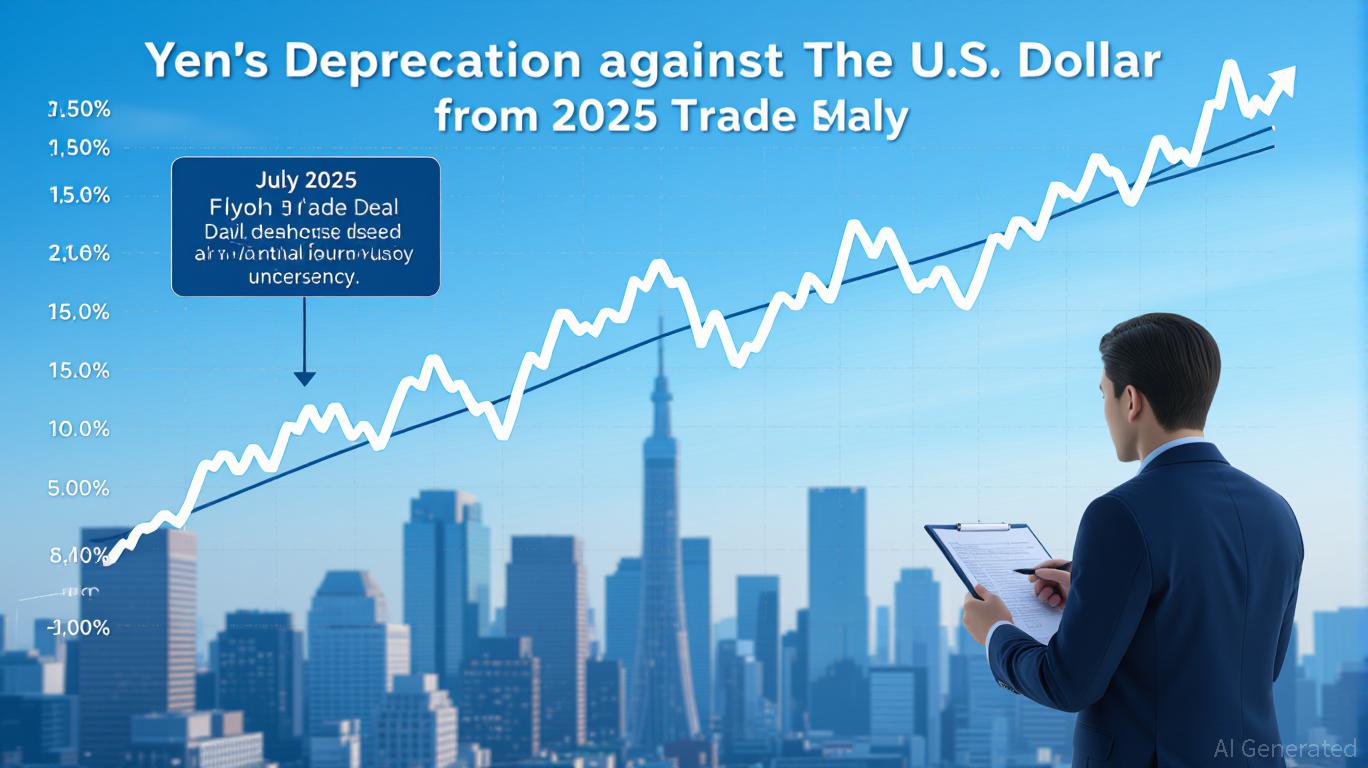Japan’s economic and political landscape in 2025 is a study in paradoxes. A decade of ultra-accommodative monetary policy, a historically high public debt-to-GDP ratio, and a fragmented political system have collided with global trade pressures and shifting investor sentiment. The result? A yen that remains vulnerable to depreciation despite a modest rate hike by the Bank of Japan (BOJ), and a fiscal environment where policy normalization is constrained by domestic and international uncertainties. For investors, this confluence of factors presents both risks and opportunities—particularly in hedging strategies that can mitigate currency exposure while capitalizing on potential policy-driven volatility.
Political Instability and Monetary Policy: A Delicate Balancing Act
Japan’s political system has entered uncharted territory. The ruling Liberal Democratic Party (LDP) and its coalition lost their majority in the July 2025 upper house election, marking the first such loss since 1955. This has triggered a leadership crisis for Prime Minister Shigeru Ishiba, who faces mounting pressure to form a fragile coalition or adopt compromise fiscal policies. The fragmented parliament now risks gridlock, with opposition parties advocating for larger stimulus packages and tax cuts to address inflation and cost-of-living pressures.
The BOJ, historically sensitive to political developments, finds itself navigating a precarious path. After raising its policy rate to 0.50% in January 2025—the first hike in 17 years—it has paused further tightening, citing global trade uncertainties and the need for more data. Core inflation reached 2.6% in FY2025, yet the BOJ remains cautious, wary of how political instability could undermine fiscal discipline and exacerbate debt vulnerabilities. This hesitancy is compounded by U.S.-Japan trade tensions, including tariffs on Japanese automobiles, which threaten to erode export-driven growth and complicate the central bank’s inflation outlook.

The Yen’s Paradox: Weakness Amid Rate Hikes
Despite the BOJ’s rate increase, the yen has weakened against the dollar, trading near 146.20 per dollar in late July 2025. This paradox reflects a combination of factors:
1. Carry Trade Unwinding: Japanese investors, drawn by higher global yields, have repatriated capital from overseas assets, reducing demand for the yen.
2. Global Rate Differentials: Japan’s policy rate of 0.50% remains far below U.S. rates, which hover near 5%, creating a persistent incentive for yen shorting.
3. Fiscal Uncertainty: Political gridlock has dampened confidence in Japan’s ability to manage its 240% public debt-to-GDP ratio, pressuring the yen further.
The BOJ’s forward guidance suggests that sustained yen weakness could trigger a policy shift. If the yen falls below 150 per dollar—a level seen as a potential threshold—Governor Kazuo Ueda has hinted at a reassessment of monetary easing. However, political risks, including a possible fiscal stimulus package or trade concessions, could delay or dilute such action.
BOJ’s JGB Tapering and Fixed-Income Risks
The BOJ’s tapering of its massive Japanese Government Bond (JGB) purchase program adds another layer of complexity. Initially announced in 2024, the tapering has been slowed to 200 billion yen per quarter starting in early 2026, with the goal of reducing monthly purchases to 2 trillion yen by March 2027. This gradual approach aims to avoid destabilizing the bond market, particularly for long-dated JGBs, which have seen rising yields and volatility.
For investors, the tapering signals a potential normalization of Japan’s bond market. However, the interplay between fiscal expansion and monetary policy remains a critical risk. With the government’s gross debt at 240% of GDP, any increase in JGB yields could sharply raise borrowing costs, threatening fiscal sustainability. Japanese life insurers and pension funds, which hold significant JGB portfolios, are particularly vulnerable to this risk.
Hedging Strategies for Yen Exposure
Given the yen’s volatility and the BOJ’s uncertain policy path, investors should consider hedging strategies to protect against further depreciation. Here are three approaches:
Currency Forwards and Swaps: These instruments allow investors to lock in exchange rates for future transactions, mitigating the risk of yen weakness. For example, U.S. dollar-based investors holding JGBs can hedge their exposure by entering into forward contracts that offset potential yen depreciation.
Options-Based Hedging: Currency options provide downside protection while retaining upside potential. A collar strategy, which involves buying a put option and selling a call option, can limit losses if the yen weakens while capping gains if it strengthens.
Diversification into Yen-Hedged Assets: Equity investors in Japan can opt for hedged ETFs, such as the WisdomTree Japan Hedged Equity ETF (DXJ), which has historically outperformed unhedged alternatives. This approach reduces exposure to currency swings while accessing Japan’s resilient equity market.
The effectiveness of these strategies is underscored by historical data. Hedged JGB positions in 2023–2025 generated a 10.3% return differential compared to unhedged counterparts, driven by the yen’s depreciation and favorable interest rate differentials.
Shorting the Yen: A High-Risk, High-Reward Play
For aggressive investors, shorting the yen could be a compelling strategy if the BOJ tightens more aggressively than expected. A sustained yen decline below 150 per dollar would likely trigger a policy response, but political and trade-related uncertainties make such a scenario uncertain. Shorting the yen via futures or leveraged ETFs requires careful timing and risk management, as sudden policy shifts or geopolitical events could reverse the yen’s trajectory.
Conclusion: Navigating Uncertainty with Prudence
Japan’s economic and political landscape in 2025 is fraught with challenges. Political instability, fiscal risks, and a cautious BOJ are creating a volatile environment for the yen and fixed-income markets. While the potential for policy normalization exists, the path is clouded by domestic and international uncertainties.
For investors, the strategic case for hedging is clear. Whether through currency forwards, options, or hedged equity exposures, mitigating yen risk is essential in a world where political and monetary forces are increasingly intertwined. As the BOJ navigates this complex terrain, staying attuned to both macroeconomic data and geopolitical developments will be key to capitalizing on opportunities while managing risks.


AloJapan.com